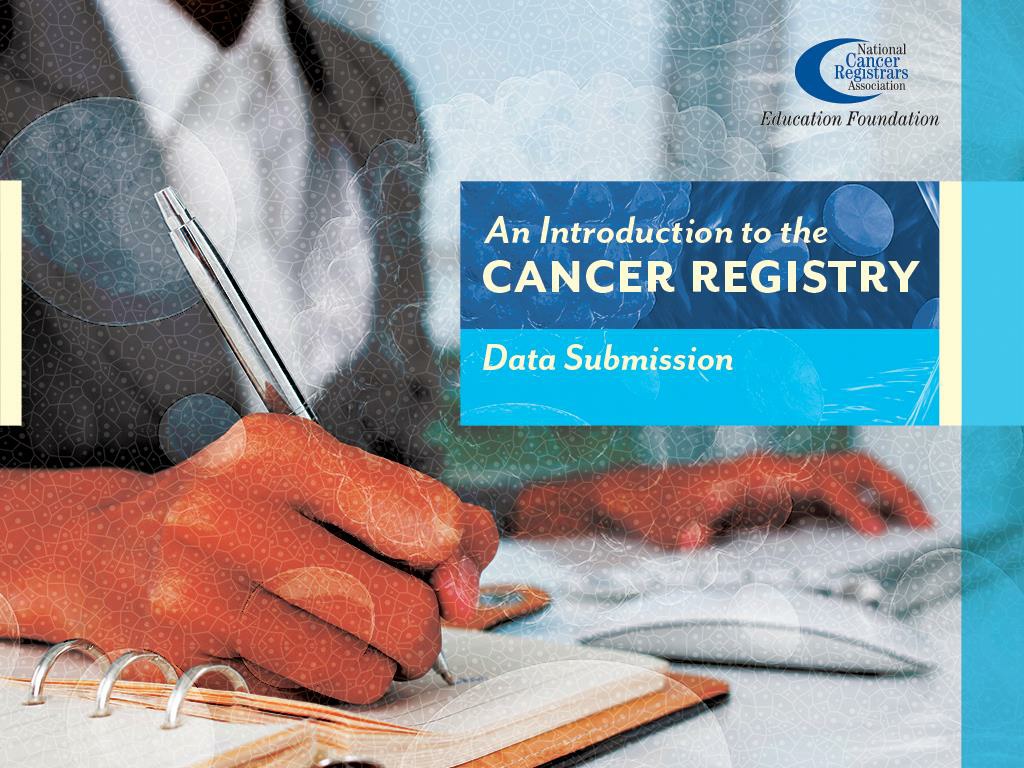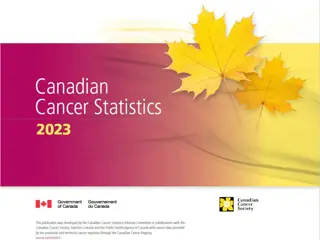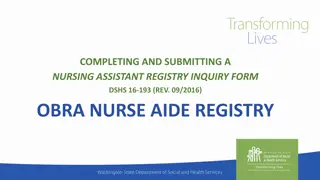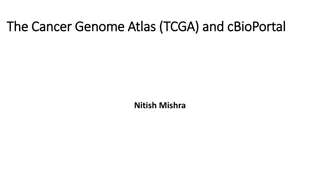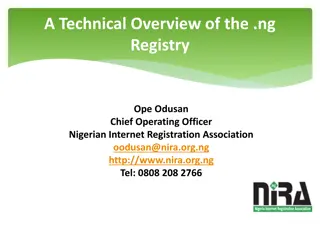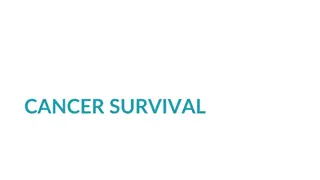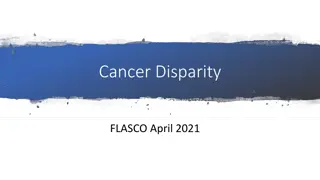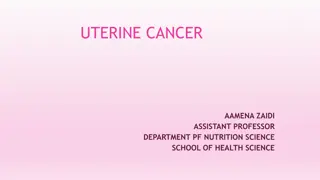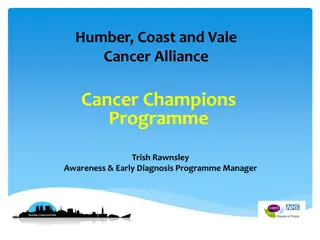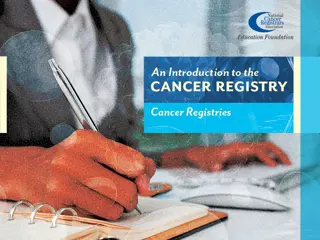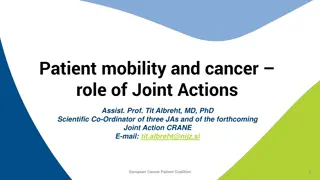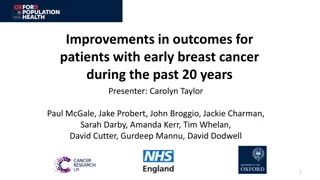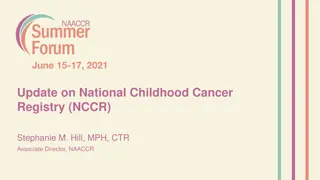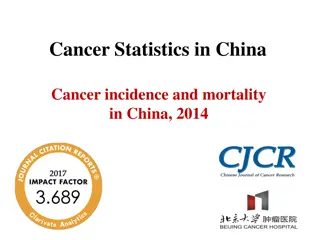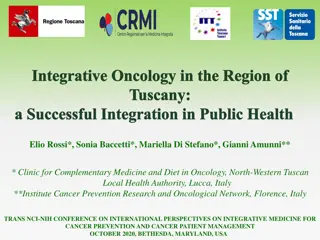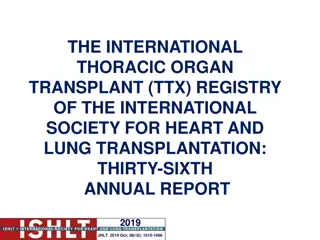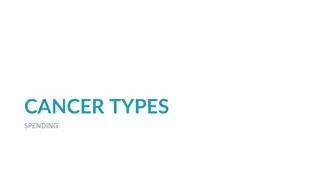Data Submission in Cancer Registry Systems
Data submission in cancer registry systems serves the purpose of contributing to a larger pool of information for monitoring cancer trends, determining patterns, guiding program planning, and assisting public health professionals. Organizations like the State Central Cancer Registries and national programs such as NAACCR, SEER, and NPCR play vital roles in collecting and utilizing this data. Cancer registrars play a crucial role in compiling, editing, and securely submitting patient data on demographics, tumor details, cancer stage, treatment, and outcomes. The data collected is utilized for outcomes analysis, benchmarking, decision-making, and planning in cancer care. Accreditation programs like the CoC ensure high-quality data collection and standards compliance for measuring cancer care quality.
Download Presentation

Please find below an Image/Link to download the presentation.
The content on the website is provided AS IS for your information and personal use only. It may not be sold, licensed, or shared on other websites without obtaining consent from the author.If you encounter any issues during the download, it is possible that the publisher has removed the file from their server.
You are allowed to download the files provided on this website for personal or commercial use, subject to the condition that they are used lawfully. All files are the property of their respective owners.
The content on the website is provided AS IS for your information and personal use only. It may not be sold, licensed, or shared on other websites without obtaining consent from the author.
E N D
Presentation Transcript
Objectives Discuss the purpose and benefit of submitting data Identify the organizations data is submitted to Review the type of data submitted Explain the cancer registrar s role in data submission
Purpose and Benefit Data goes into a larger pool of data Outcomes Benchmarking Decision making Planning
State Central Cancer Registries Designed to: Monitor cancer trends over time Determine cancer patterns in various populations Guide planning and evaluation of cancer control programs Assist public health professionals
Beyond State Reporting North American Association of Central Cancer Registries (NAACCR) Surveillance, Epidemiology, and End Results (SEER) National Program of Cancer Registries (NPCR)
Programs by Funding Status https://www.cdc.gov/cancer/npcr/public-use/index.htm
Commission on Cancer (CoC) Accreditation Program Establishes standards and guidelines Collects high-quality data Develops effective educational interventions Use data to measure cancer care quality Submit data to the Rapid Quality Reporting System (RQRS) Requires annual data submission to the National Cancer Database (NCDB)
Types of Data Submitted Patient demographics (limited info to NCDB) Primary tumor site (location of origin) Tumor morphology (histology) Cancer stage (extent of tumor spread) Initial course of therapy (treatment) Outcomes (vital and cancer status)
The Cancer Registrars Role Compile data files of abstracts Run and clear edits for errors Submit data securely and electronically Comply with deadlines
Summary Data collected used for outcomes, benchmarking, decision making, planning Standard-setting organizations require different levels of demographics Cancer registrars collect and submit the data
Thank You! NCRA Education Foundation www.ncraeducationfoundation.org NCRA www.ncra-usa.org
